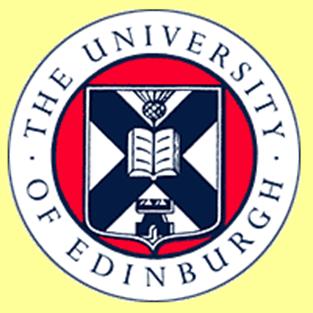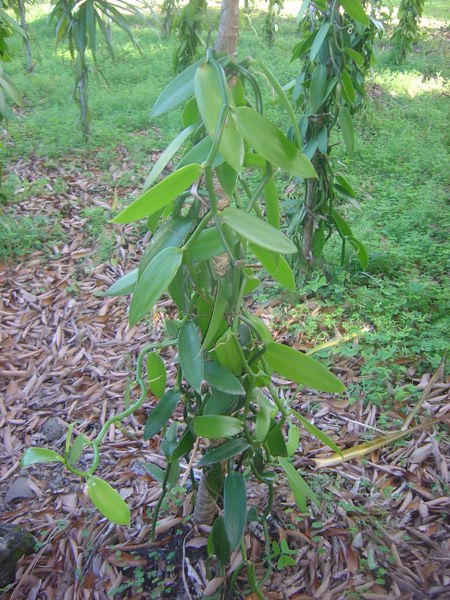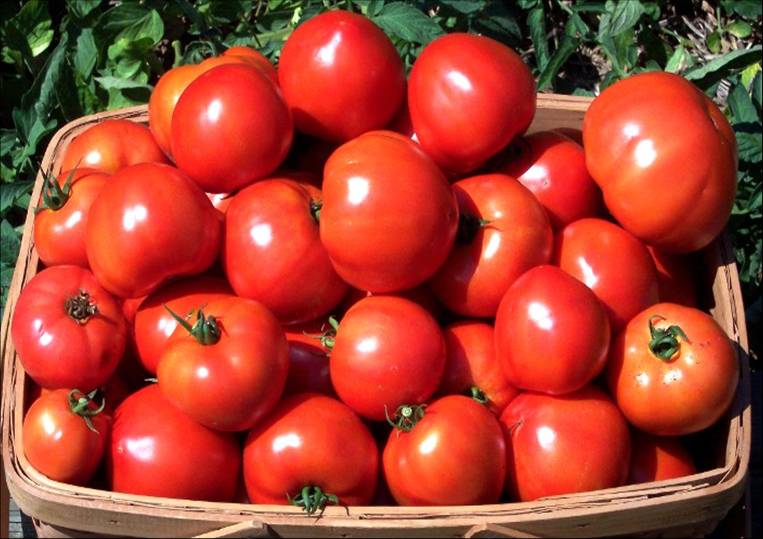Edinburgh/Yoghurt/Applications
From 2007.igem.org
 Introduction | Applications | Design | Modelling | Wet Lab | References
Introduction | Applications | Design | Modelling | Wet Lab | References
Contents |
Why Vanillin?
| Vanilla planifolia |
Vanillin is the major contributer to vanilla flavouring, which is utilised in a multitude of different products. These range from scents and fragrances, to cakes, orange juice and ice cream!
Vanilla flavouring is traditionally extracted from the orchid Vanilla planifolia, first discovered in Mexico, and now widely grown throughout the Americas and tropics.
The world market for natural vanilla flavouring is currently worth over $1 billion per annum, and each kilogram of vanilla extract can fetch as much as $3000!
Our project will enable the natural synthesis of vanillin (the major constituent of vanillia flavouring), from the amino acid tyrosine.
We chose tyrosine as our starting point for vanillin biosynthesis for the following reasons:
- endogenously produced by many bacteria, so there is no need to add a starter substrate
- present within milk proteins, will provide an additional tyrosine source for our yoghurt producing LAB
- required one less enzymatic step than phenylalanine
- several papers report the possibility of upregulating the tyrosine biosynthesis pathway. This could be utilised to increase vanillin production
As vanillin will be produced by a living organism, and not chemical synthesis, our novel pathway constites a natural source of vanillin, and the final product could be marketed as such. Potentially, the successful and efficient production of vanillin from a natural metabolite (tyrosine) could lead to a much cheaper industrial scale method of natural vanilla flavour production.
More information about vanilla flavouring and its production may be found on wikipedia
Potential Medical Benefits of GM Food
Bonus's of Zeaxanthanin Pathway
The carotenoids produced by the zeaxanthin pathway are not just pretty pigments as they also have several world renound health benefits!
The properties of both B-carotene and lycopene have been avidly studied by scientists, a few examples of these are given below. By encorporating these carotenoids into our yoghurt, we are not only using healthy food colourings, but we are also helping to protect future consumers from diseases such as cancer, heart disease and nyctalopia (poor dark adaptation).
B-carotene
B-carotene is converted into vitamin A by the body. Vitamin A is essential for vision, immune response, epithelial cell growth and repair, bone growth, reproduction and maintenance of the surface linings of the eyes, to name a few examples.
Deficiency in vitamin A can cause:
- Abnormal dark adaptation
- dry skin, hair & broken fingernails
- decreased resistance to infections
Lycopene
Lycopene a carotenoid, with red pigmentation, is an intermediate in the zeaxanthin pathway. Several studies have reported the benifits of having a high dietry intake of lycopene, a few examples of which are given below.
Lycopene is reported to be an extremally benificial antioxident:
| "its unique structural and biologic properties enable lycopene to prevent free-radical damage to cells caused by reactive oxygen species, thus acting as a potent antioxidant" (Ansari & Ansari, 2005) |
Lycopene has also been inversely related with the risk of chronic disease, including prostate cancer and heart disease:
| "Dietary intakes of tomatoes and tomato products containing lycopene have been shown to be associated with decreased risk of chronic diseases such as cancer and cardiovascular diseases in several recent studies" (A Venket Rao, 2000) |
Introduction | Applications | Design | Modelling | Wet Lab | References


